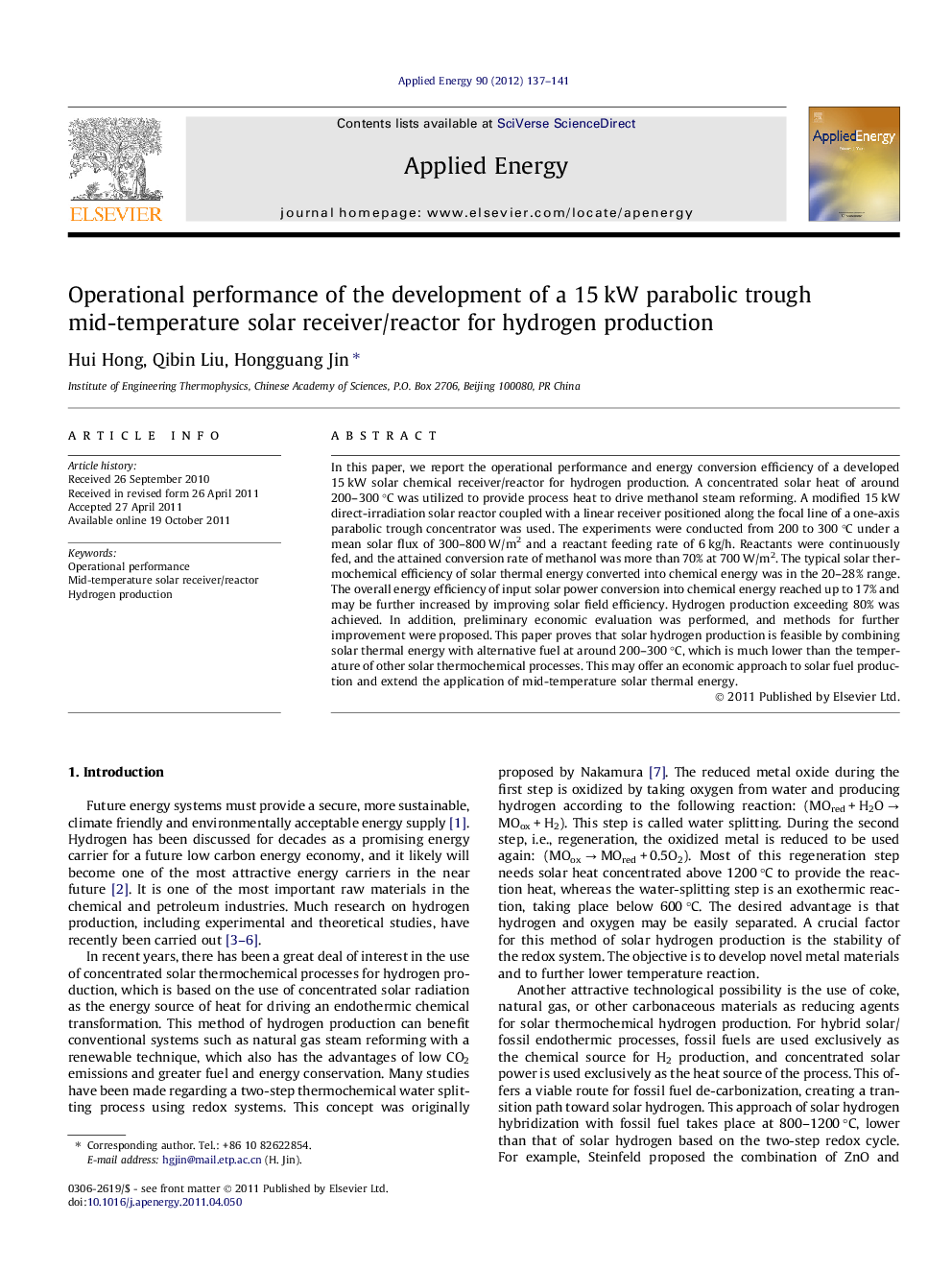| Article ID | Journal | Published Year | Pages | File Type |
|---|---|---|---|---|
| 243915 | Applied Energy | 2012 | 5 Pages |
In this paper, we report the operational performance and energy conversion efficiency of a developed 15 kW solar chemical receiver/reactor for hydrogen production. A concentrated solar heat of around 200–300 °C was utilized to provide process heat to drive methanol steam reforming. A modified 15 kW direct-irradiation solar reactor coupled with a linear receiver positioned along the focal line of a one-axis parabolic trough concentrator was used. The experiments were conducted from 200 to 300 °C under a mean solar flux of 300–800 W/m2 and a reactant feeding rate of 6 kg/h. Reactants were continuously fed, and the attained conversion rate of methanol was more than 70% at 700 W/m2. The typical solar thermochemical efficiency of solar thermal energy converted into chemical energy was in the 20–28% range. The overall energy efficiency of input solar power conversion into chemical energy reached up to 17% and may be further increased by improving solar field efficiency. Hydrogen production exceeding 80% was achieved. In addition, preliminary economic evaluation was performed, and methods for further improvement were proposed. This paper proves that solar hydrogen production is feasible by combining solar thermal energy with alternative fuel at around 200–300 °C, which is much lower than the temperature of other solar thermochemical processes. This may offer an economic approach to solar fuel production and extend the application of mid-temperature solar thermal energy.
► A 15 kW solar chemical receiver/reactor for hydrogen production was developed. ► The solar thermochemical efficiency of the receiver/reactor was in the range of 20–28%. ► Hydrogen production exceeding 80% was achieved. ► The research results extend the application of mid-temperature solar thermal energy.
